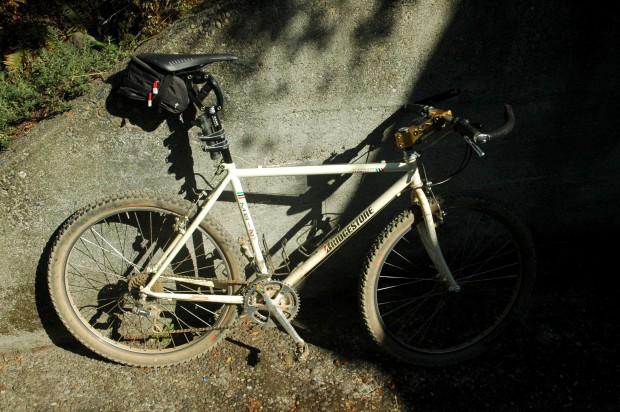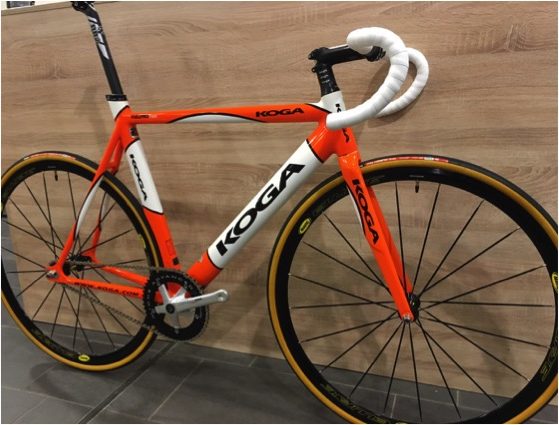Project Zero: Zip Rebuild

Phase I of Project Zero is complete. Stock, the Zip wasn't a bike that i was going to be able to ride. First of all, I'm too tall for the 270mm Ritchey seatpost, and the stem was too short. Also, while I love the approach Bridgestone took to designing their bikes, I have to say that suspension of some kind is appreciated by my joints if not my mind. Also, this bike is hitting my Nostalgia Button, and for that, I have to take it back to the way we were riding bikes in 1991.
My family had more bikes than sense, and we ran the gamut on technologies available at the time. We had a full-suspension Cannondale “Boinger” – equipped with the short-lived Campy Euclid group – my Schwinn loaded up with Rock Shox, various Cannondales, and a couple Bridgestones. We rode the Bridgestones stock for a while until we got turned onto the Softride suspension stem. We loved the clever design; the stem doesn't change the geometry of the bike the way suspension forks did (before they were part of the design like they are now), were very light, didn't suffer from sticktion, and were self-damping. Similarly, we loved the design of the Thudbuster seatpost; they worked great – as long as you didn't mind using rear suspension that effected the height of your saddle.
The great benefit of both the the Softride stem and the Thudbuster seatpost is that neither changes the geometry of the bike. When climbing out of the saddle, the Thudbuster doesn't effect the bike at all – it's still a hardtail. But, when seated, it's three inches of travel noticeably softens bumps. The stem has a slight bouncy feeling when climbing out of the saddle like any other front suspension mechanism without a modern lockout, but with some careful adjustment of the stem's spring tension, you can find a good balance between suspension when you want it, and lack of bounciness when you're climbing.
Once I got the Zip, I went about collecting the parts I needed to get back to my mountain biking comfort zone. To my surprise, the Thudbuster is still in production and several improvements have been made to the design. It seems lighter than the old model, and the motion of the parallelogram seems to eliminate any noticeable change in saddle height. Most importantly, they provide different elastomers (remember elastomers?) that let you tailor the stiffness of the suspension. Since all I want is to take the edge off the worst of the bumps, I installed the stiffest ones. The seatpost is also surprisingly light; the Thudbuster/Arione combo is lighter than the stock Ritchey/Turbo setup.
Softride is no longer in the bike parts building business, but I snapped up a NOS stem on eBay for next to nothing and installed it. It's amazing how light the system is; including the Profile quill adapter, the Softride setup weighs about the same as the original steel stem.
With that, the Zip appeared ready to embark on it's maiden voyage. Prepping for the ride, however, we discovered the tires were hopelessly old and cracked, so I picked up some new ones. To my surprise, when taking the old tires off the rim, I realized they had steel beads (were the Specialized Crossmax stock?); the new ones are way lighter and a bit wider than the old ones. Finally, the maiden voyage proved too rough for the original headset, so it was replaced with a Chris King and the old brake pads were replaced with some fresh ones.
All said, the bike weighs about the same as it originally did. But don't worry, all the stock parts are safely stowed in a box.
[dmalbum path=”/velominati.com/content/Photo%20Galleries/[email protected]/MB-Zip%20Rebuild/”/]

